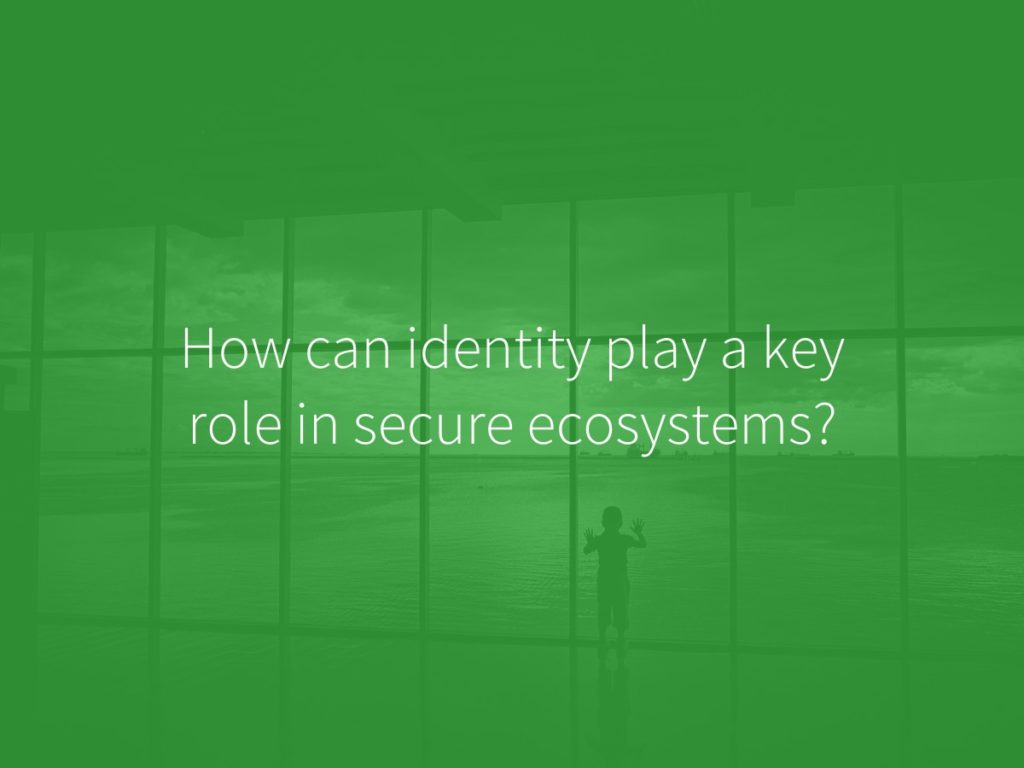
Skill testing can give recruiters a competitive advantage in today’s ultra-competitive job market. Not only that, but candidates who are hired on merit, rather than background, tend to stay longer and perform better over the long term. Here’s how to use skills assessments to fill your open positions and to keep your pipeline full of happy, engaged candidates.
What is a Skill Test?
A skills test is an assessment used to provide an unbiased, validated evaluation of a candidate’s ability to perform the duties listed in the job description.
Typically, a skills test asks a variety of questions in different formats to see how candidates perform on-the-job tasks. A good skills test includes questions that are capable of being answered by someone already doing the job and can accurately measure key performance metrics. Questions should also be specifically tailored to relate to the responsibilities of an open position. Many skills tests include immersive experiences, like coding challenges or job simulations, to mimic how a candidate performs when faced with a real-life scenario.
Other types of job-readiness evaluations deploy validated psychometric assessments to identify those in-demand soft skills: things like motivation, conscientiousness, resilience, and emotional intelligence. A personality assessment varies from a skills test in that it predicts how a person will behave in a specific scenario, rather than their ability to complete a task.
While skills test cover task-related abilities, like coding, copywriting, or sales, some pre-employment assessments integrate the less tangible capabilities – things like teamwork and leadership. These qualities are sought after by executives at more than 900 companies, according to a Wall Street Journal survey of executives. Yet, 89% of those surveyed said they have a “very or somewhat difficult time finding people with the requisite attributes.” Where traditional hiring methods fall short, a skills test can easily clarify a candidate’s true talent.
Overall, skills tests can play a critical role in predicting on-the-job success. More so than resumes or job interviews, a skills test can assess the true potential of a new hire to go the distance with the company. Here’s how skill testing works, and why more companies than ever are starting to integrate skill testing into the recruitment and hiring process.
How Skill Testing Works
Skill testing works best when the questions being asked are specifically crafted to the role and needs of the team hiring the new candidate. In designing a skills test, combine different types of questions to get a 360-degree view of how a candidate will perform in different scenarios.
There are a variety of ways to set up a skills test – and we’ll get into the mechanics of how to actually run the assessment in the next section. But, designing a thoughtful aptitude test takes some initial foresight on behalf of the hiring manager and team. Research by Deloitte suggests this sample process for selecting and implementing skill testing questions:
- Define the “human elements” needed to perform the job
- Compile questions that will measure and predict these human elements
- Use the data gathered by the skills assessments to empower the next round of the screening process
- Post-hiring, evaluate the efficacy of the hiring assessment to ensure the questions delivered the best result.
Ultimately, the best use for an aptitude test is to help recruiters move away from the resume and allow candidates to prove they are the real deal. Crafting the right series of questions should be a collaborative process between the recruiting team and the team hiring the new employee. Here’s how these teams can set up and run a skills test.
How to Set Up and Run a Skill Test
In designing a skills test or pre-employment assessment, there are a few specific steps to take in order to thoughtfully structure your questions. Vervoe recommends following these best practices in setting up and running your skills test. These tips can help with candidate engagement and lead to high rates of completion.
- Your skills test should include a minimum of six questions; somewhere in the eight to ten range is best.
- At least a few questions should require text answers; start with a text-based response in the first question, rather than a video or immersive question.
- At least one question should be multiple choice.
- Include an “immersive” style question, in which the candidate edits a document, spreadsheet, or presentation.
- To retain a candidate over the entire experience, start with easier questions and build up to more difficult ones later in the assessment.
- Try to minimize use of timers to account for technical difficulties and give the candidate the best chance of success.
We also suggest that video responses not be timed; there are too many technical issues that can result from a candidate trying to film a one-way video interview. If you do wish to set a time limit, make sure it’s at a minimum of five minutes.
Running a skills test through Vervoe, or any other platform, is relatively straightforward. Vervoe’s Talent Trials let you select questions from a library of assessment tools, or design your own questions based on the specific needs of your company. The Talent Trial library offers questions and trials created by experts in their fields, meaning they have at least 3+ years of experience in their specific area of expertise. You can preview questions from any of the Talent Trial areas and add them seamlessly through the Vervoe platform.
Now that you know how to set up an aptitude test, when should you deploy this tool during the hiring process?
Using Skill Tests During Hiring
Timing is everything when it comes to adding a skill assessment to your hiring process. Research by Harvard Business Review revealed that skills tests should come early in the hiring process. According to their study, “Many service companies, including retailers, call centers, and security firms, can reduce costs and make better hires by using short, web-based psychometric tests as the first screening step. Such tests efficiently weed out the least-suitable applicants, leaving a smaller, better-qualified pool to undergo the more costly personalized aspects of the process.”
Skill tests should be used to screen candidates in, not out. The issue many recruiters face is that the volume of candidates makes it impossible to carefully consider each person’s ability. Smart algorithms and AI tools can turbo-charge candidate assessments by scoring results quickly and removing human biasfrom the equation. Vervoe’s algorithm scores candidates using a multi-layered approach. Candidates are ranked based on how well they performed, rather than filtered out if they didn’t achieve a certain benchmark. The top candidates easily rise to the top; but no one misses out on being considered for the next round. When used early in the hiring process, Talent Trials can select a more diverse pool of applicants to continue onto the next phase.
Skill Test Examples and Templates
There are many ways to set up a skills test, depending on the position for which you are hiring. Pre-employment skills tests can cover a range of positions: administrative assistant, finance and accounting,and call center reps are just a few roles that companies hire for using Talent Trials.
Excel skill tests, coding skill tests, typing skill tests, and other computer skill tests are the most common forms of pre-employment assessments. Some companies focus on questions that are task-related, e.g. “Create a Powerpoint Slide that has a video embedded in the presentation.” Questions can get hyper specific to test a niche skill, like a coding language, or be posed more broadly to test the general requirements for success at a certain level.
Some companies choose to focus on verifying the skills that will help a candidate succeed beyond the immediate position. This approach skews closer to a pre-employment assessment, with questions designed to reveal if a candidate can climb the corporate ladder, adapt in a challenging work environment, or respond under pressure. For example, one call center rep test included questions such as, “You have an elderly customer on the phone who is having trouble understanding your instructions. A colleague is also trying to transfer a call from a customer you served before, and you have a scheduled follow-up call happening in 5 minutes. How would you handle and prioritize in this situation?”
Multiple choice, open-ended questions, and pre-recorded video responses are all great ways to see if a candidate has what it takes to do the job well. But, do candidates enjoy answering these types of questions?
Do new hires like doing skill tests?
By most accounts, candidates appreciate the opportunity to showcase what makes them great at their job. Orica, the world’s largest provider of commercial explosives, integrated skill testing into their interview process to the delight of their job candidates. In revamping the interview process for graduate students looking to join the Orica team, recruiters consolidated their online evaluation components into one platform, Vervoe. The Talent Trial test combined questions focusing on skills, logic, and values.
An average of 86% of candidates completed the online process, and the reviews were mostly positive. Here’s what the candidates had to say about the skills test:
“The tests required total engagement and thought, and were a clear demonstration of what makes Orica different from any other company.”
“I think the questions were very diverse and it allowed me to showcase myself, my skills and abilities in different ways.”
“It gave me an opportunity to showcase who I am as well as challenge my skills”
This is just one example of how a skill test can change the entire interview process for a potential new hire. In a job market where people spend an average of 11 hours a week looking for a new job, it’s easy to get burned out, fast. Every job description starts to look the same; every interview begins to feel stale.
When given the opportunity to showcase their talent through real-world tasks, job candidates will jump at the chance to be engaged with the job description, rise above their resume, and challenge themselves. Companies that use Vervoe’s Talent Trials experience a 97% candidate completion rate, which is among the highest engagement rates in the industry. Candidates love the opportunity to stand out from the crowd. Even if they aren’t hired, skills testing offers a break from the repetition of the stale interview experience.
What are the benefits of a skill test?
The benefits of a skills test aren’t limited to the candidate experience.
Recruiters looking to hire diverse, high-performing teams with better efficiency and consistency can use pre-employment tests to their advantage. Skills tests are a better predictor of performance than resume screenings or traditional interviews alone. Resume screenings are bad for three reasons. First, studies suggest that it’s common for candidates to lie on their CV. The person you think you’re hiring may not actually possess the qualifications you think they do.
Second, resumes only provide a high-level view of a candidate’s credentials and work experience. These items don’t offer qualitative insight into actual on-the-job performance. Coupled with recruiting biases that are built into the process, the third threat is that recruiters are privileging candidates based on background and demographics, rather than talent. Perhaps this is why new hires crash out as often as they do. According to one study, 46% of new hires “fail” within the first 18 months of being hired.
Skill tests can help take some of the bias out of the interview process, give recruiters a new evaluation metric to consider, and lead to happier, long-term hires. There’s ample evidence to suggest they really do work better than many of the other traditional hiring methods recruiters have relied on in the past.
Do skill tests work?
In our experience, skill testing works better than traditional hiring methods – with some caveats.
Without a doubt, aptitude tests can be used to replace resume screening. This style of sorting through candidates increases the chance that the best candidates will be unfairly eliminated. Good people get screened out, rather than screened in. So-called “pedigree proxies” – resumes and cover letters – are not indicative of job performance, yet they are often the quickest way a recruiter or algorithm can think of to cut down on their stack of candidate resumes.
Skills tests improve time to hire while allowing the hiring manager to see how someone will do the job, before they get the offer. This reduces turnover costs, which add up quickly: the cost of making the wrong hire can be up to 2.5x salary, easily over $100,000. Working with Vervoe’s Talent Trials, on the other hand, can help a recruiter identify the best people at under $100 per hire.
The best skills tests, however, need the right formula to help the candidates succeed. Some recruiters focus narrowly on the skills that will help a new hire succeed in the immediate position for which they are hiring. Yet, many CEOs emphasize the importance of soft skills – things like leadership and teamwork. New hires may end up being disappointed and leaving because they lacked the soft skills needed to adapt to their new team, not necessarily the skills to perform the job. Recruiters must integrate questions into their skill assessment that focus on critical soft skills that predict long-term success. These validated psychometric assessments are key to assessing “culture fit” without defaulting to recruiter bias.
Skill tests vs. interviewing
In conclusion, we’ll leave you with few thoughts on skill tests compared to interviews.
First, interviews, in general, need a total overhaul. Recruiters have been asking the same, outdated interview questions for decades. Many candidates get overwhelmed by the performance anxiety inherent in the interview and may make (forgivable) mistakes. Nevertheless, many recruiters like the security of meeting someone before making an offer.
Many recruiters seek the same insight from a group interview or case study that they would get from an individual skill test. Unfortunately, using these methods can’t give you the same valuable information as a straightforward aptitude assessment. Case studies can be too conceptual; rather than seeing how a candidate will approach the work listed in the job description, case studies ask abstract questions. The goal of asking “how many tennis balls can fit on a Boeing 757” is not to see if the candidate can guess the right answer, but to see how they approach the question and reason through their response. But this knowledge doesn’t always serve a recruiter with the best predictor of on-the-job success.
Group interviews provide more insight – into a candidate’s teamwork, leadership, and communication, for example. Yet, in a group scenario, extroverts tend to dominate. It can be difficult to see how each candidate performs as an individual while trying to consider the group at once.
In summary, skill testing is all about understanding whether a candidate can do something or knows something. It’s about verifying their ability to go the distance with your company. Pre-employment assessments differ slightly in that they focus on predicting how a candidate will behave in certain scenarios, not what they can do. By combining questions from skills testing and pre-employment assessments, recruiters can get a more accurate picture of the candidate’s ability.
Original Post: https://vervoe.com/blog/the-complete-guide-to-skill-testing/





